Laura Knight in 5 Paintings: Capturing the Quotidian
An official war artist and the first woman to be made a dame of the British Empire, Laura Knight reached the top of her profession with her...
Natalia Iacobelli 2 January 2025
During the Italian Renaissance, women artists did not have the same access to artistic education as men. Sofonisba Anguissola, however, was very lucky to receive artistic training and later achieve a successful international career. She paved the way for many other female artists who would later follow in her footsteps.
Sofonisba Anguissola was born in 1532 in the city of Cremona, Northern Italy. Her father, Amilcare, encouraged both her and her sister to train with artist Bernardino Campi. Anguissola herself appears often in her own works and we know of at least twelve self-portraits by the artist (seven are believed to have been lost). Her self-portraits form a series that was larger than those by either Dürer or Rembrandt. In one of her most famous paintings, the artist paints herself on an easel in the process of painting Madonna and Child. In Renaissance artworks, the female figure would normally be the subject of the painting. Here Anguissola establishes herself as the creator too.
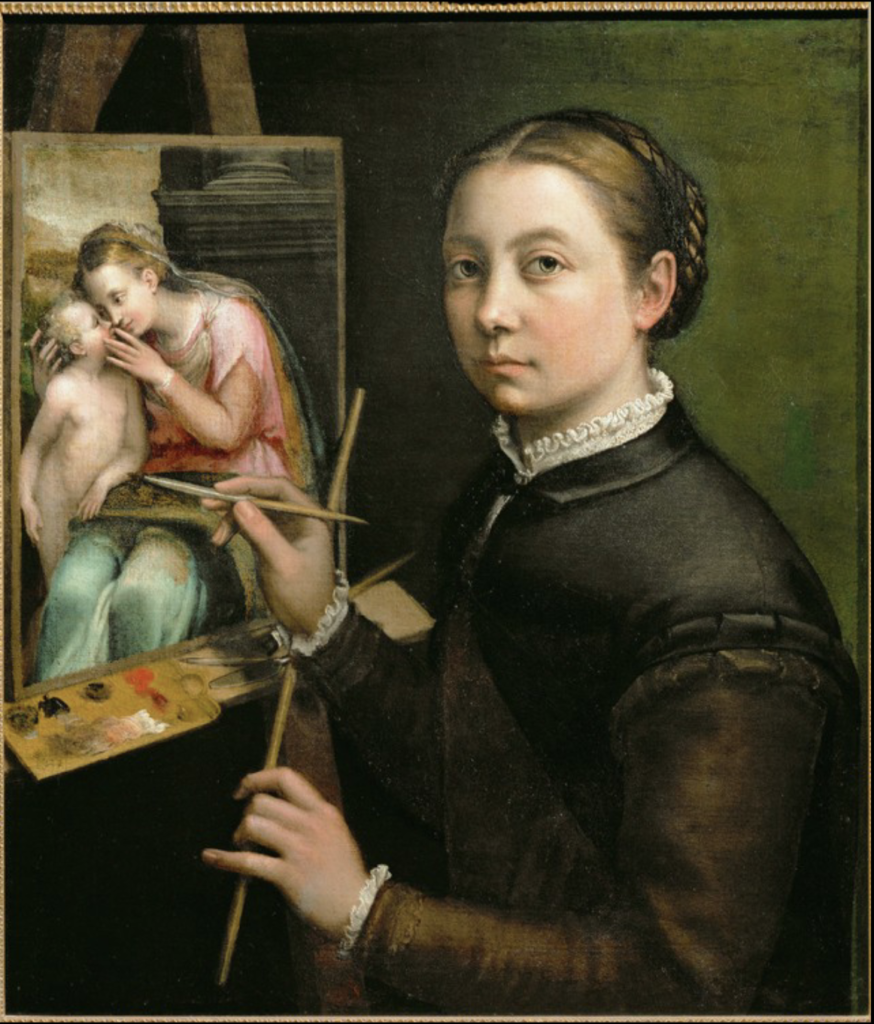
In the 16th century, art was a predominantly male occupation. At that time, Sofonisba Anguissola did not comply with roles that were traditionally assigned to women, such as a mother and a homemaker. Instead, as a strong and independent woman, she decided to fulfill her ambition of becoming an artist instead. By doing this, she paved the way for other female artists such as Lavinia Fontana who followed in her footsteps and also went on to paint portraits of the nobility and history paintings.
In an unusual self-portrait from 1559, Anguissola painted herself being painted by her teacher Bernardino Campi. This work can be called a self-portrait in the sense that it is a painting of the artist and Anguissola is the creator. However, within the scene, the painter we can see is Campi. The painting provides a commentary on gender roles assigned throughout art history – the male as the creator, and the female as the subject. Here, Anguissola breaks the rules and reverses these roles.
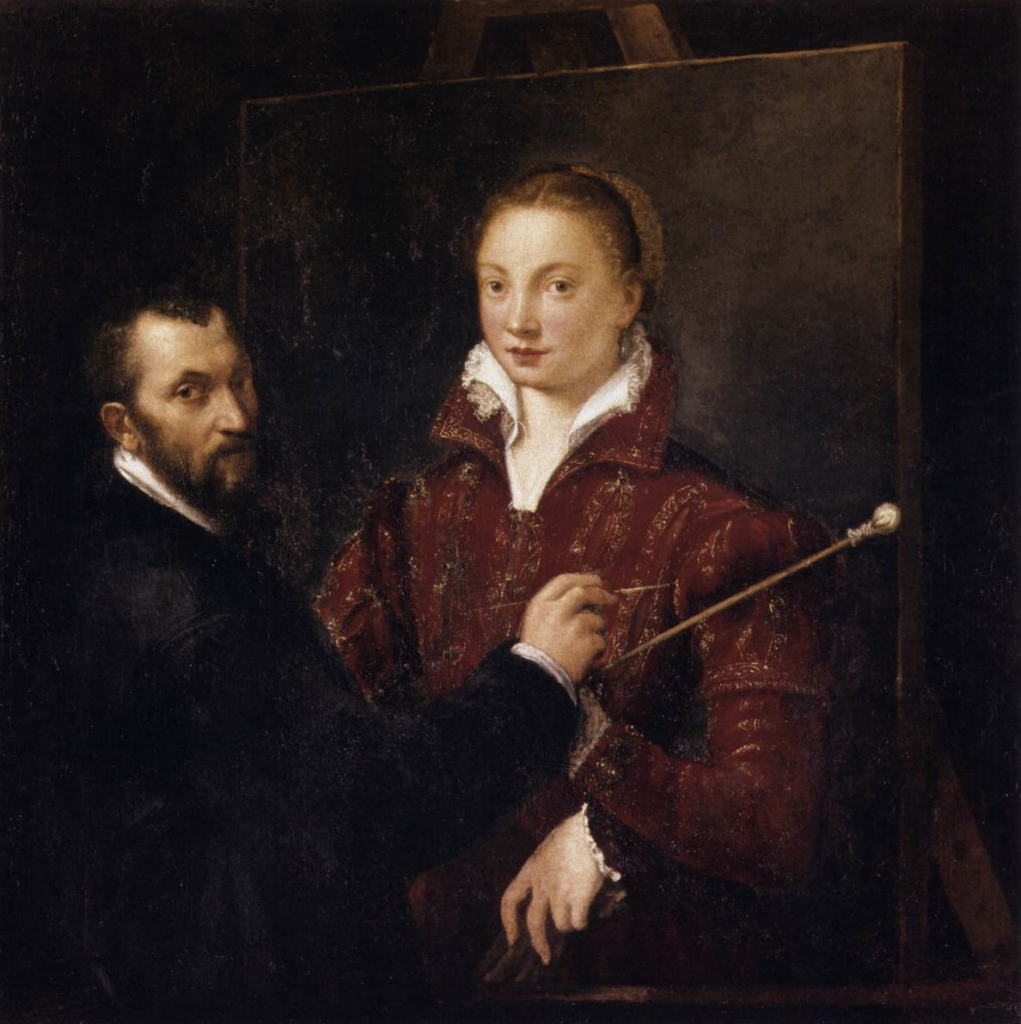
The artworks created by her were not limited to the genre of the self-portrait. Anguissola demonstrated that she was just as capable of producing other types of art as some of the most celebrated male artists of her time. For example, she painted a number of portraits for Philip II’s Spanish court. She was a tutor to his wife, the consort Queen of Spain, Elisabeth of Valois. She balanced both the jobs of being a tutor to the consort and being a successful artist at the same time.
In these portraits, she proved her worth as a major court artist and established that her talent was equivalent to contemporary male court artists. However, in some ways, the role of a court artist in Spain constrained her artistic career. Anguissola produced these artworks to earn a living, under the guidelines of a strict contract. Her self-portraits, on the other hand, can be seen as examples of her own self-expression and freedom as an artist.
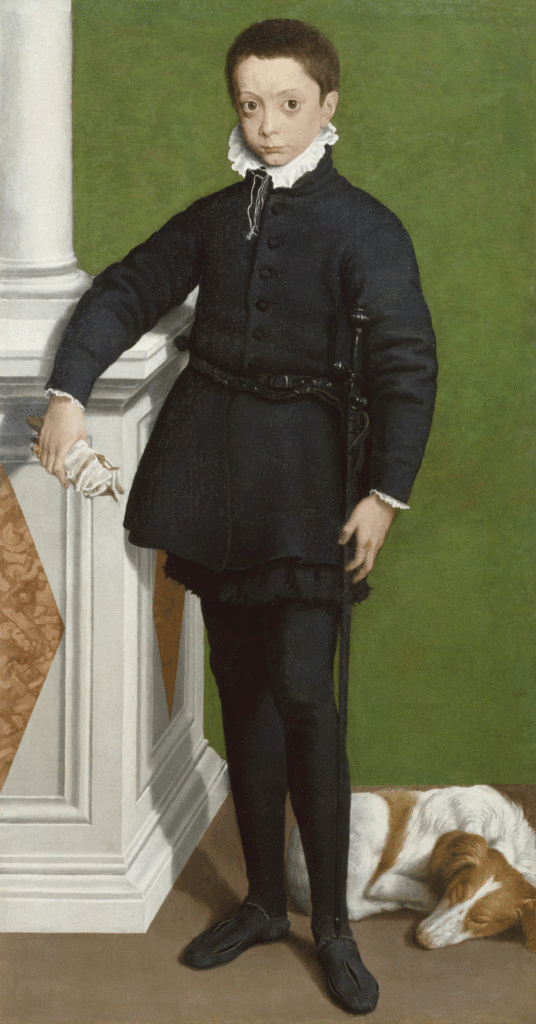
Overall, Anguissola achieved great international fame during her career. Her success was extraordinary, not just for a female artist at that time, but exceptional for an artist in general. When she was 92, a Flemish painter in English court, Anthony van Dyck painted a portrait of her, showing her in her old age.
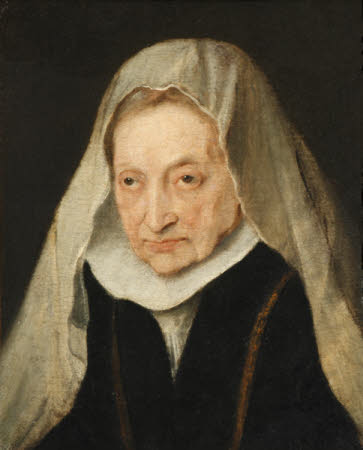
Female artists of the Italian Renaissance, like Anguissola, have only received a small proportion of the recognition that they deserve as artists. Traditionally, female artists have been excluded from the “canon” of art history – the established timeline of key artists and art movements throughout history. But this began to change with the introduction of feminism in the 1970s. Perhaps most famously, Linda Nochlin’s article Why Have There Been No Great Women Artists? highlighted their exclusion.
The exhibition, A Tale of Two Women Painters: Sofonisba Anguissola and Lavinia Fontana, at the Museo Nacional del Prado in Madrid (Oct 2019–Feb 2020) displayed a number of works of these two pioneering female artists for the first time, celebrating their success. The first room was dedicated to self-portraits by both. Amongst the artworks displayed elsewhere in the exhibition was The Chess Game. This painting shows the artist’s sisters (Elena, Minerva, and Europa) playing a game of chess. An unusual subject in the 16th century, the painting provides an insight into a domestic setting. It is a beautiful image of the bond between sisters. In the background, there is a landscape. The figure to the right has been interpreted as the family’s maid watching the girls play the game.
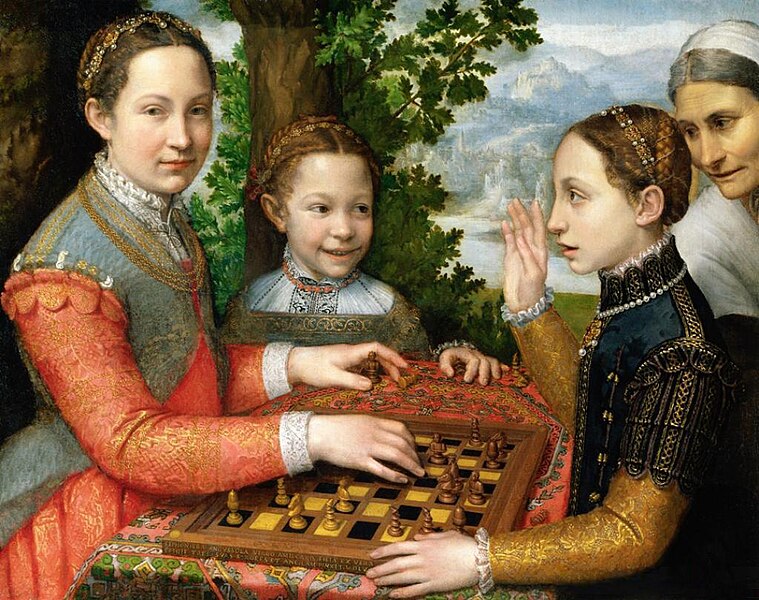
Anguissola was determined to pursue a successful career in the arts. Today, aspiring female artists are given equal access to professional training alongside men. And it was artists like Anguissola, living almost 500 years ago, who proved that women should be allowed to work as artists too. Sofonisba Anguissola was an extremely inspirational woman, artist, and rule-breaker.
Linda Nochlin. “Why Have There Been No Great Women Artists?” In Women, Art, and Power and Other Essays, edited by Linda Nochlin, 145-177. New York: Routledge, 1988.
Leticia Ruiz Gómez. A Tale of Two Women Painters: Sofonisba Anguissola and Lavinia Fontana. Madrid: Museo Nacional del Prado, 2019.
DailyArt Magazine needs your support. Every contribution, however big or small, is very valuable for our future. Thanks to it, we will be able to sustain and grow the Magazine. Thank you for your help!